Gold is a color that has always fascinated us with its shiny and rich appearance. However, it seems like a color that is harder to mix for most of us, especially to get the metallic sheen. Here is how you can make the gold color for your artwork.
The color gold is made by combining yellow and brown colors with a touch of red. The vibrant yellow provides brightness, while the red adds warmth. The addition of brown creates depth and richness. Blue is also added to tone down the color to make gold color.
In this article, we will learn about mixing colors and find out which colors are combined to create a beautiful sparkling gold shade. We’ll discover the secrets behind this captivating color and explore the palette that brings gold to life.
What colors make gold color?
Two colors – yellow and brown – should be mixed to produce the color gold. However, many other colors can be added in various degrees to create different hints and shades of gold. Alternatively, mixing yellow, blue, and red paint also produces gold.
The color gold is commonly featured in artworks of several empires throughout history, from ancient Egypt; to Byzantine and early Christian art; to Persian, Indian, and Mughal dynasties; and medieval and renaissance Italy. Historically, gold in artwork was often associated with divinity and faith. Although the use of color has scaled down today, golden tones are still paired with most colors to embolden the features of artworks.
What acrylic colors make gold?
In general acrylic gold color can be made by mixing one part brown paint with ten parts yellow paint. To achieve lighter shades of gold color mix with a bit of white acrylic paint. To make darker shades of gold color with orange hints mix with a bit of red acrylic paint.
Much like creating gold color with any other paint, brown and yellow paint are used to produce the color gold when using acrylics as well.
However, the trick to using acrylics lies in the ratios of colors mixed. When using acrylic paint, one part brown paint to ten parts yellow paint is used to produce gold. It is always easier to darken acrylic paint than to lighten it. With acrylics paint in particular, small amounts of dark colors can go an exceptionally long way.
Brown and yellow paints can be mixed using a palette knife. Using a palette knife helps achieve the desired color and consistency of paint. It is also advised that the palette knives are cleaned between different colors. Depending on the painter’s preference, more brown or yellow paint can be mixed in until the preferred shade of gold is achieved.
Gold can be mixed with a dollop of red for darker shades of gold with orange tinges. Below you will see the results of the gold colors made by mixing, cadmium yellow and burnt umber with and without pyrrole red.
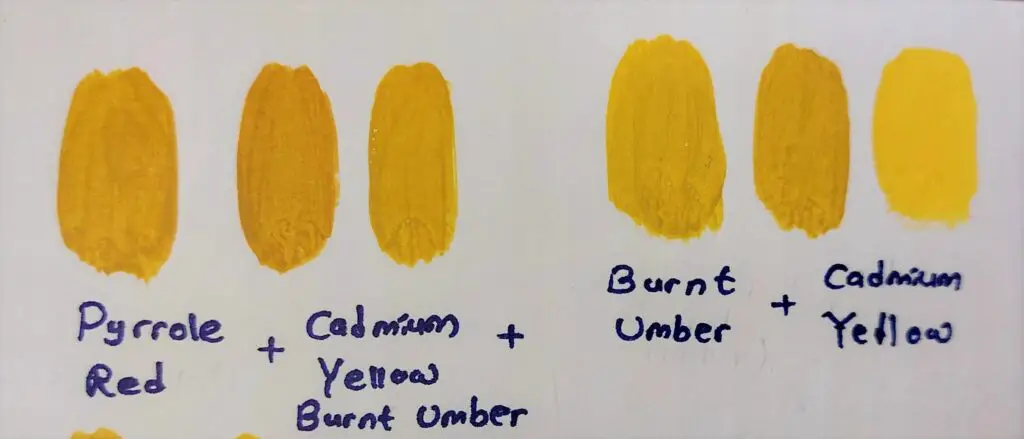
Furthermore, a small amount of white paint can be added to the gold, if needed. This provides a sense of translucence and opacity to the acrylic gold. Below you will see the lightened versions of the above mixed gold colors with titanium white.
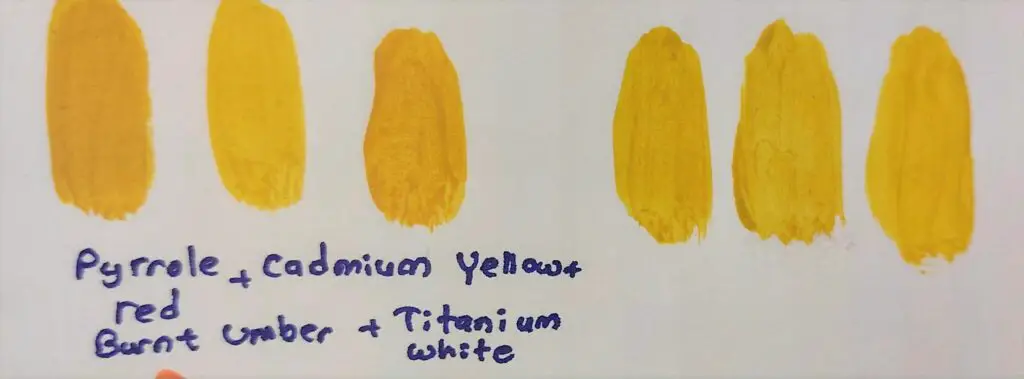
Another favorite recipe for gold color is mixing yellow ochre and cadmium yellow. That’s the easiest and closest to the actual gold color I could get onto. Below you can find the mixed gold colors using yellow ochre.
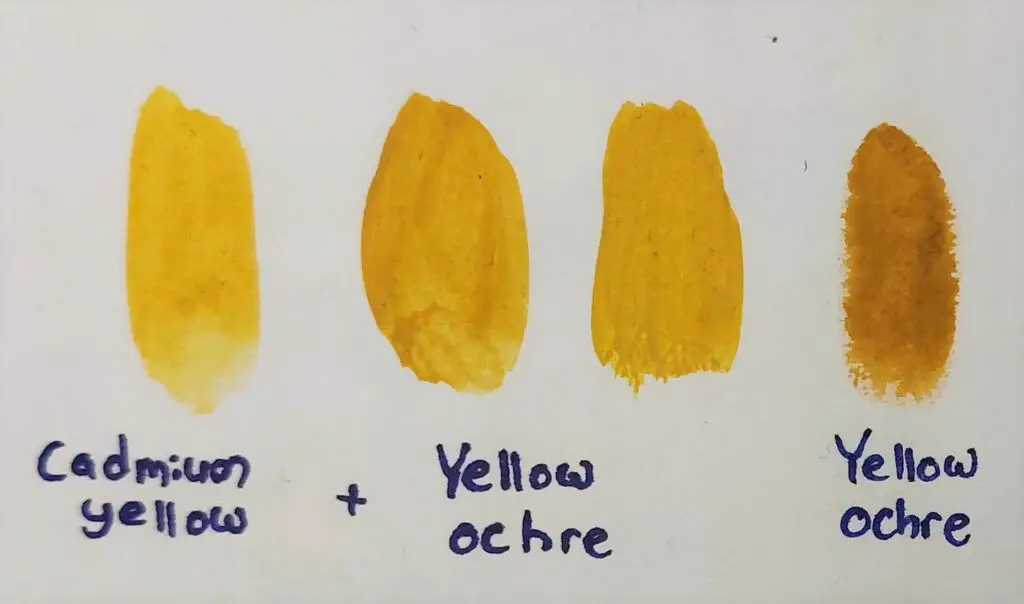
Alternatively, one can also use store-bought gold acrylic tubes that are rich in pigments. Ready-made acrylic gold paint is also available in the market.
What two colors make metallic gold?
Metallic gold color can be mixed by applying ten parts yellow paint to one part red paint. Usually, applying multiple coats of paint on the object helps achieve the deep and saturated shine of metallic gold. Alternatively, adding glitter or gold fakes to gold paint also helps achieve its steely shine.
Metallic gold is a color that varies between light olive-toned browns and dark yellow tints. As its name suggests, metallic gold’s visual sensation is attached to a steely shine and sometimes a brazen glare. Metallic gold is usually applied to 3D objects.
In 2D paintings, the metallic gold effect can be achieved by painting the shadows and highlights right. That is how you see the shine of metals in a painting done on a flat surface, like a canvas; usually in still-life paintings.
Shades and Tints of gold color
To produce different shades and tints of gold, yellow paint must be combined with brown paint in various ratios. Ten parts of yellow to one part brown paint produce a basic shade of gold. Gold that is heavy on yellow produces a radiant shade of gold. Gold that is heavy on brown produces a muted shade of gold.
It is advised that color mixing should begin with yellow, as adding a little brown paint goes a long way. Like with any color palette, the color gold too has a comprehensive range of colors to choose from. Goldenrod, metallic gold, golden brown, golden yellow, golden poppy, rose gold, harvest gold, sunglow, and pale gold are to name a few.
To get a warmer shade of gold mix in a little bit of warmer red color like cadmium red with the cadmium yellow and burnt umber. For a cooler shade of gold use a cooler shade of yellow which is lemon yellow with burnt umber and a bit of cooler red color like pyrrole red.
Does yellow and orange make gold?
When mixed, yellow and orange produce the color amber. Amber is a tertiary color. Different hints of amber can be achieved by mixing yellow and orange in various experimental proportions. Although it is a hue that is more yellow than gold, its bright and warm undertones resemble the impression of gold.
A color that projects joy, energy, and radiance, amber is used to create natural elements such as sunsets and flowers. Best paired with tints of brown, orange, red, blue, and purple; amber also looks great alongside neutral tones such as grey.
Does red and blue make gold?
Red and blue are two primary colors that produce purple – a secondary color – when mixed. However, the result often depends on the types of base colors used and the medium employed. These two colors can be used in small amounts to produce a warm-toned gold color with a yellow base.
To produce the desired shade of gold, a yellow base needs to be combined with blue paint first and then red paint. Color mixing should be followed again by a desired amount of yellow paint that will result in your preferred shade of gold.
For brighter and more vibrant shades of gold, using cobalt blue, cadmium red, and cadmium yellow is advised. Alternatively, continuing to add yellow paint also results in a brighter and more radiant shade of gold. On the other hand, more red paint must be added for duller shades of gold.
What colors make gold with colored pencils?
Using white, yellow, brown, and black colored pencils in various ratios will produce any desired shade and tint of gold. The suggested yellows and browns to be used are canary yellow, yellow ochre, burnt ochre, sienna brown, and dark umber. The ratios of colors used decide whether the gold is more radiant and brighter in shade or if it is duller in shade.
While gold-colored pencils are included in any colored pencil set, it is entirely possible to create realistic shades of gold without employing gold-colored pencils at all.
The trick to achieving the reflective shine in the color gold is to employ shadows and highlights using white and black colored pencils. These shadows and highlights help turn the yellow and brown paint into a shinier pop that resembles gold. How closely it reflects gold also lies in how well the colors are blended.
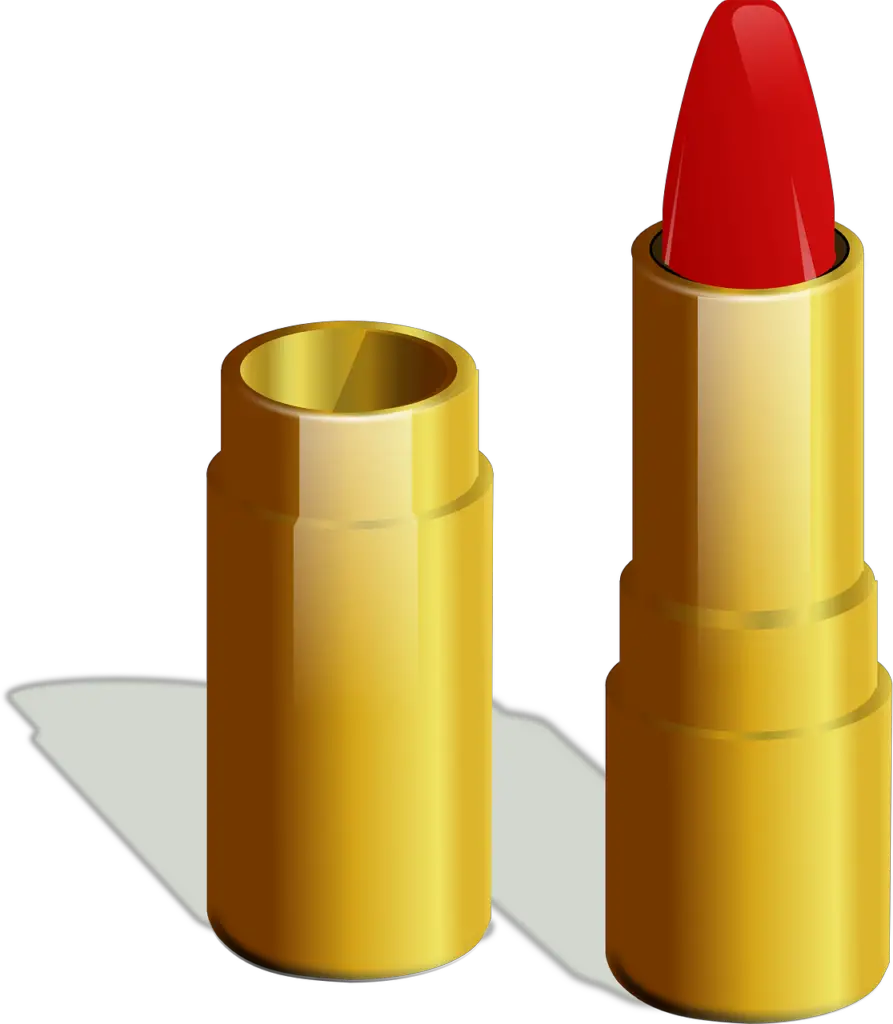
Using the colors in a manner that represents an ombre effect – starting with yellow paint fading into brown paint or brown paint fading into yellow paint – also helps achieve the steely color of gold. As with any case of using colored pencils, several coats of color may need to be painted to give that gold color a sense of prominence.
How to make gold color digital art?
There are several steps to creating gold color in digital art. Any mainstream digital art software – like Photoshop and Corel Painter – can be used to follow the subsequent steps. The first step to making a gold-colored shape in digital art is to fill the desired shape with a flat color. Depending on preference, the flat color may lean more towards a red or a yellow tint, which will result in a duller shade of gold or a brighter shade of gold, respectively.
Subsequently, a darker shade of color needs to be blended into the shape, which will provide a blurred shadow effect. A soft airbrush at 20% flow is a very useful tool to have at this stage for blending different shades. The two overlapping layers of color can be locked in either using a clipping mask or an alpha lock. To emphasize the blurred shadows, add some lighter shades to the shape and flatten it using the soft airbrush at 20% flow.
In the second stage, give the gold base some texture. To add texture to the object, use a messy spotted brush at 50% flow. It creates a shinier surface and gives the shape a more metallic resemblance.
If the gold surface needs to be more textured and scratched, add random lines using a soft edge brush at 50% flow. To emphasize these scratches, add dark shadow colors using a hard edge brush at 50% flow. How textured the gold surface needs to be is at the artist’s discretion.
The third, and final, step to making gold color in digital art is to add an overlay spark. This is done by adding desaturated yellow highlights using a soft brush at 20% flow. To make the surface shinier, use a spotted brush at 50% flow to add further highlights.
How to make old gold color?
Old gold is a tinge of yellow that resides on the duller and darker side of the range of yellow. It is a warm and brassy color. It has coppery and red undertones. It has a deep, rich, and antique aesthetic. Therefore, it is appropriately dubbed antique gold or vintage gold, as a result.
Like with any shade of gold, the base colors for old gold are also yellow and brown. Several ways of color mixing can produce the old gold color. Primarily, adding a dash of black paint to the gold color and mixing it to desired shade and consistency produces the old gold color.
Alternatively, mixing violet paint with yellow paint and adding a little amount of white paint also produces the old gold color. The use of white paint can be reduced or removed to achieve the preferred shade of old gold.
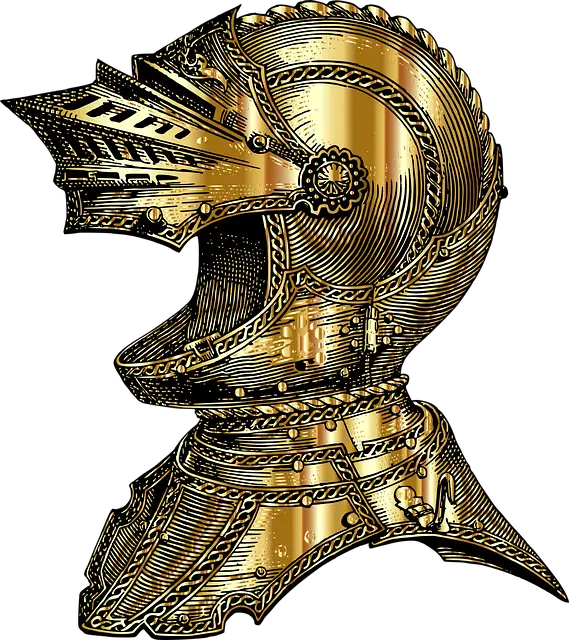
It is versatile in its tints, tones, and shades. It adds a touch of luxury and sophistication whether it is used in 2D artworks or 3D objects. A warm and welcoming color that projects elegance, it is usually seen on frames surrounding artworks.
What Colors Make Rose Gold?
Rose gold can be produced by mixing gold, silver, white, and red paint. Alternatively, the color rose gold can also be produced by mixing ultramarine blue, red, and lemon yellow or by mixing red and white. Reducing or removing the use of white altogether gives the color a metallic edge.
I have also tried making rose cold using cadmium yellow, titanium white, pyrrole red, and burnt umber. You can make the shade darker to make it closer to rose gold.
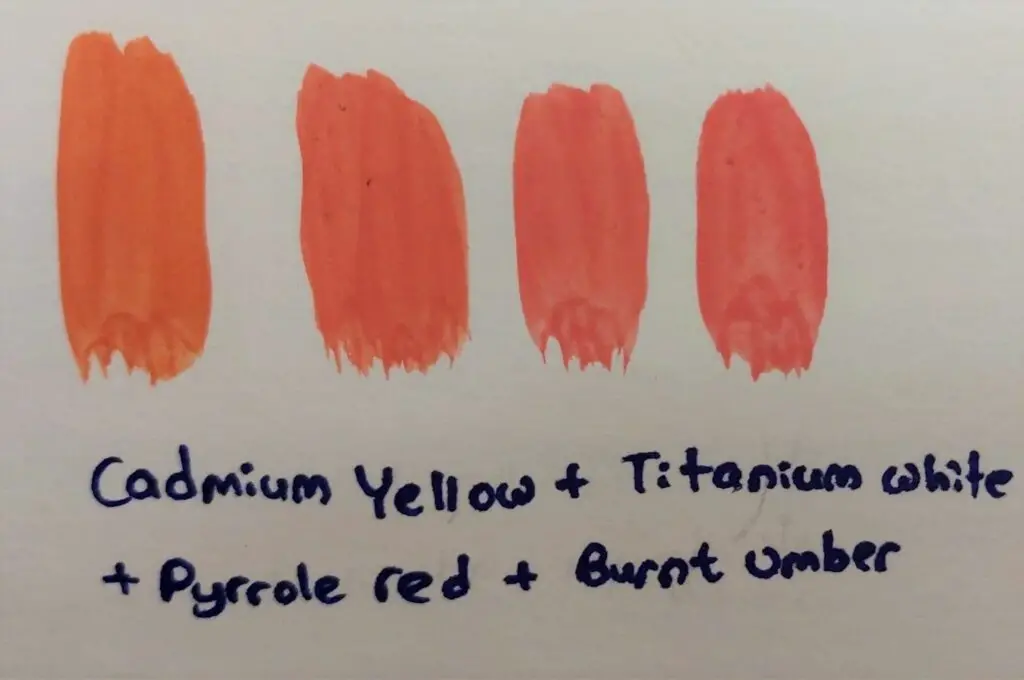
Below you can see the rose gold shades you can get by mixing phthalo blue, pyrrole red, cadmium lemon, and titanium white. You can make the shades less vibrant by mixing more white and blue colors.
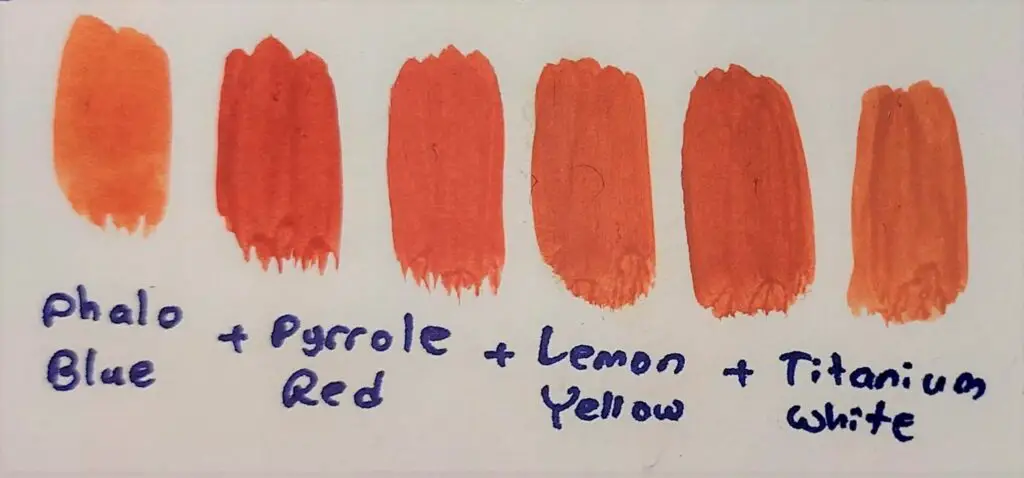
The color rose gold has been a relative discovery with its origins dating back to 15th-century Russia. Being a golden accented hue of pink, rose gold has appropriately been dubbed “millennial pink”, among other things, as the color rose to popularity since 2015.
Rose Gold is a metallic hue of pink that was originally contrived by adding copper to the gold used to manufacture Fabergé Eggs by the jewelry firm – House of Fabergé – in Russia.

Rose gold has a feminine appeal and is used to project wealth and luxury. The shades of rose gold range across a spectrum of light and dark with shades such as rose dust being dark pigmented and shades such as parrot pink being light pigmented. Fairly versatile in its use, rose gold can be paired with a multitude of colors including lilac, forest green, dark wood tones, pastel pinks… etc.
Conclusion
In conclusion, while the color gold is often associated with wealth and luxury, it can be achieved by mixing shades of yellow and hints of brown. Most importantly if painting on a flat surface use shadows and highlights to make the illusion f a metallic sheen. The better you bend the colors you will get a smoother metallic surface of gold color. This blending of colors allows artists, designers, and enthusiasts to recreate the radiant and opulent appearance of gold in various forms of artistic expression.

